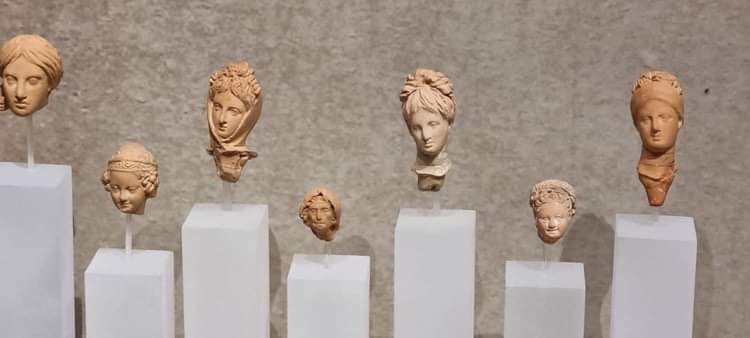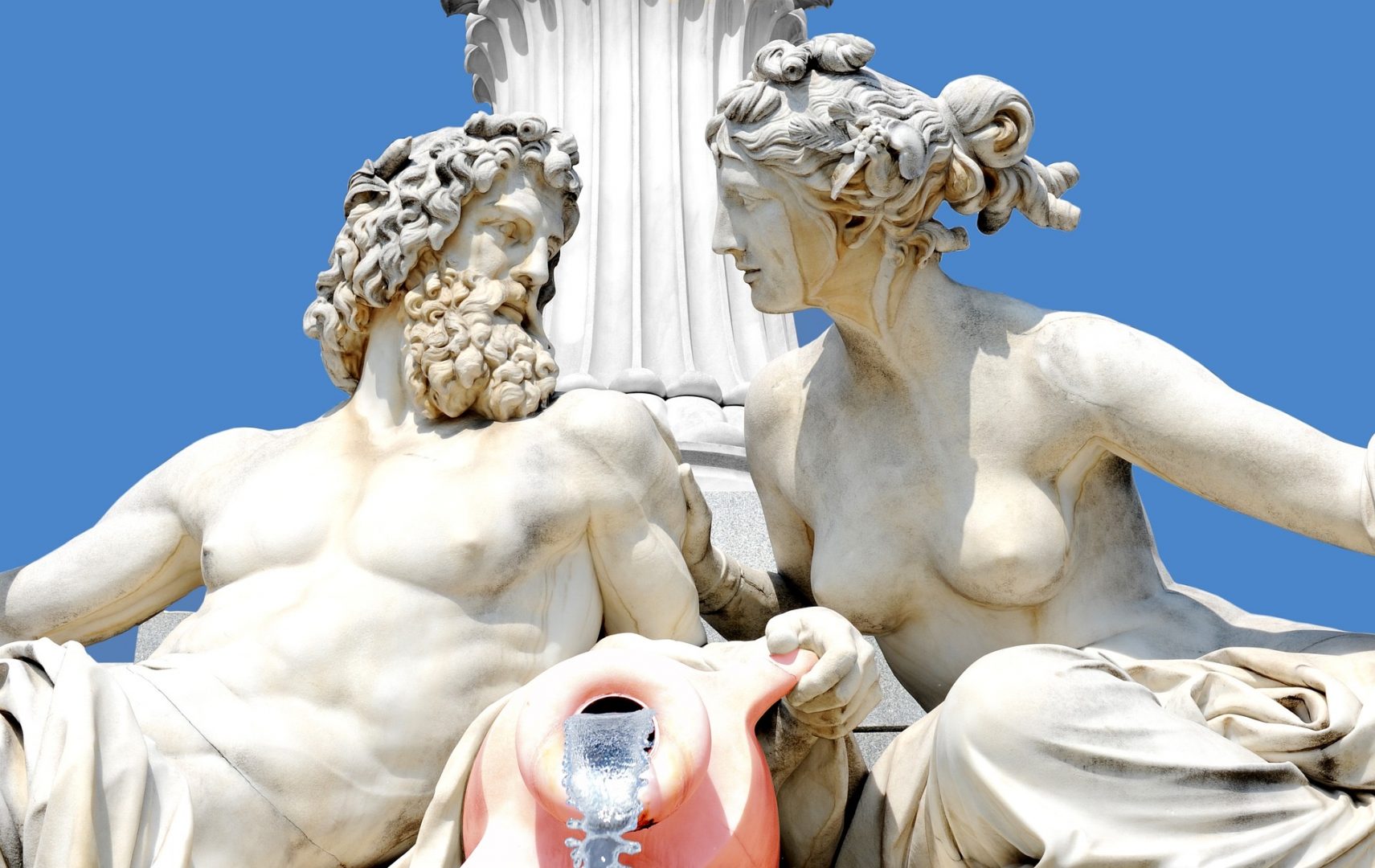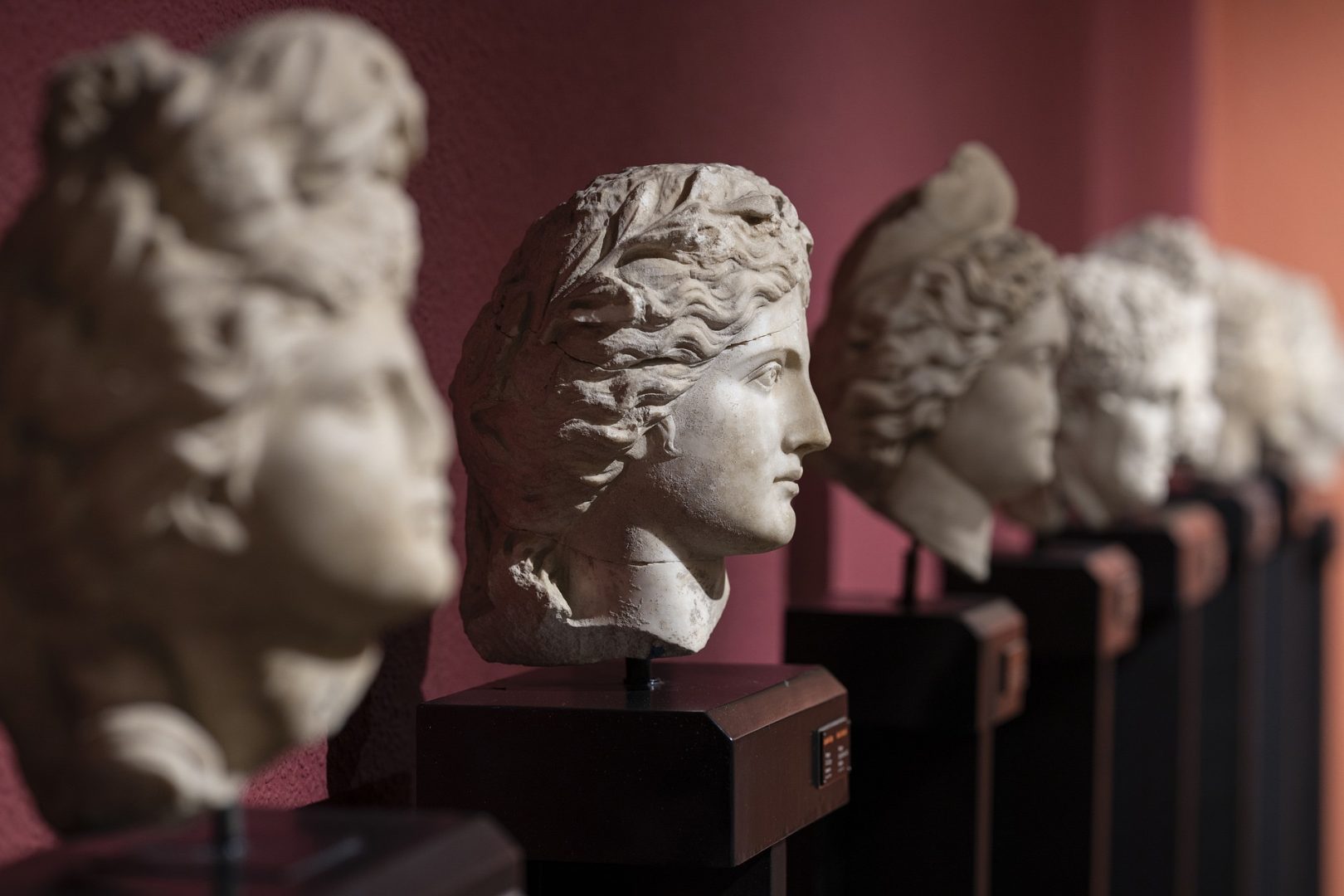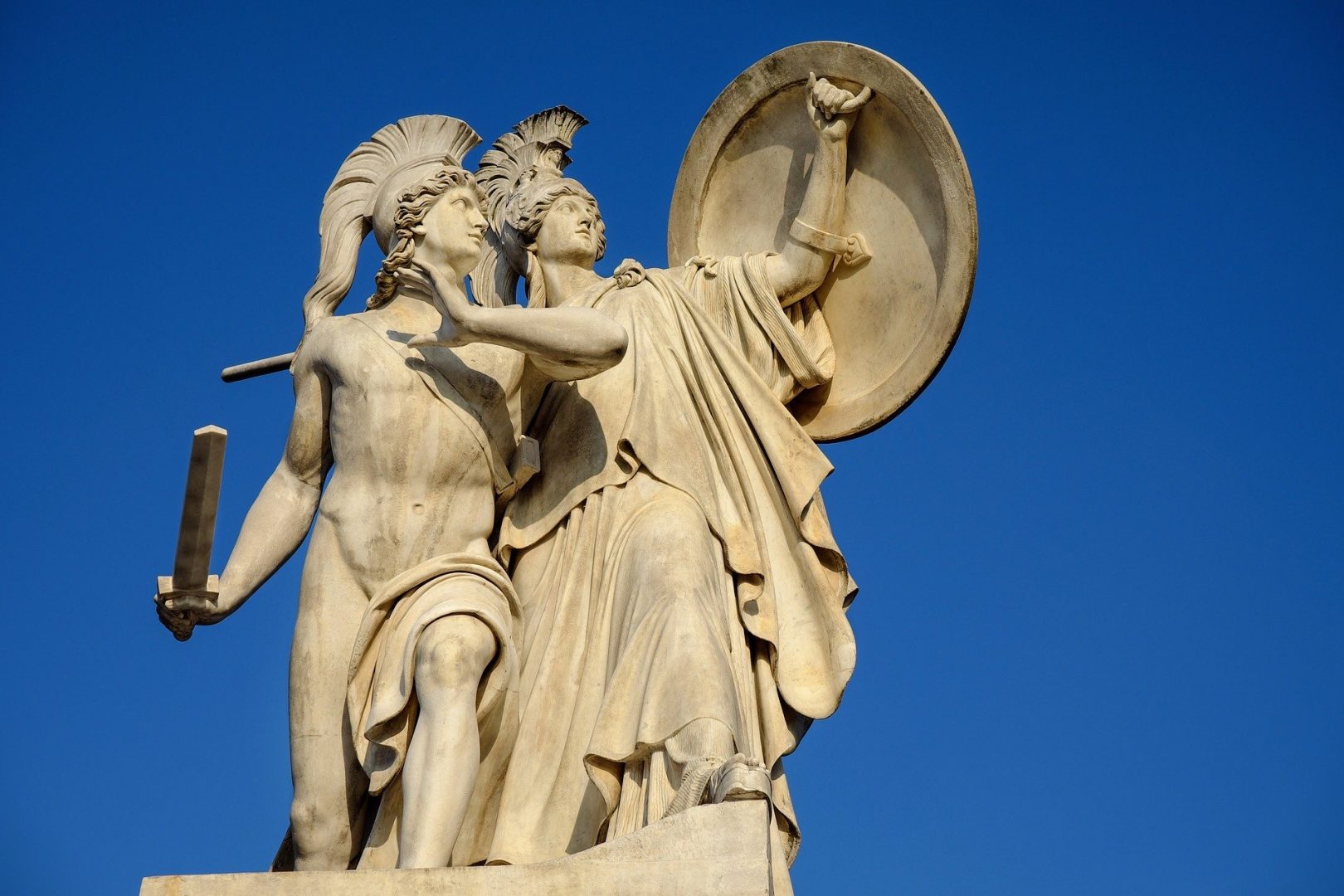Ornamentation, beauty : The improvement of the appearance of a person or place.

If you thought that hair care, hair coloring and hairstyling has its origins in more modern times, you are mistaken!!!
Hairdressing and beautification of both women and men has existed since ancient times.
It was a key factor of elegance, distinction, authority and an object of care for both sexes.
“Komo” was the priestess who looked after the statue of the goddess Athena on the Acropolis.
Komo means to take care of, to groom, hence today hairdressing is the grooming of the head.
When we talk about head grooming we include all services that involve the scalp
from its oils and its care, its shape and its final shaping with elaborate and non elaborate hairstyles.

There are many references in texts, videos and photographs that confirm how much care they took
the ancient Greeks for the care and grooming of hair and combing was considered an art.
This can be seen in statues of men and women, where elaborate and unique hairstyles are perfect even now.
Let’s look at some of the seasons and their trend in hair in men and women.
In Homeric times, men and women kept their hair long and neat,
grooming was a symbol of grandeur, heroism and freedom.
What do you think the convoys of Vervi saw when they arrived at Thermopylae?
Leonidas and the 300 grooming their hair before going into battle.
When we reach the “Golden Age” of Pericles in 500-323 BC, Athenian women do more elaborate and complex hairstyles, even perming, while men had abandoned the sport.
The only time women of the classical era cut their hair was only as a sign of mourning.
Here we are always talking about free women, since slaves had short hair as a rule.

Something from the old days…
Athenian girls wore ribbons to keep their hair high on their heads, leaving their foreheads free.
In the time of Pericles, Athenian women combed their hair in curls and fixed it high or at the back of the head,
as well as using elaborate hair accessories which were masterpieces.
Their grooming was of primary importance.
Men no longer have long hair but keep their beards or beards strong.
At the time of Μ. Alexander, the Macedonians had long hair and beards,
when M. Alexander saw that the long hair was hindering in battle
ordered the soldiers to cut them off so that they would not become a handhold in battle.
At the same time it became fashionable to use additional hair “the phoenix”, today’s wig.
Hair ornaments for ancient Greek women were ladies’ jewellery and were worn mainly at festivals or ceremonies,
while for the men it was the wreaths.

The barber and hairdresser of that time used to use
The special tools of their art, combs, scissors, razors, aromatic oils for the beautification of people.
The preferred colour of the time was blonde, but black and red prevailed, as the dyes were ecological, as they boiled walnut shells, sage leaves and blackberries.
The scolybros plant and even its root were used for the manufacture of deodorant.
However, they also made provision for bald men, as with various techniques and the use of the rose bush
they made a patch to help with hair growth.
As far as unwanted hair growth is concerned, they had the solution there too.
They made ointments based on arsenic and lead, which they used extensively for waxing.
So here we see that grooming is of particular importance to the Greeks.
The dyes, oils, plasters belong to the art of cosmetics which was connected with medicine.
So the ancient Greeks introduced not only the art to the Western world but also the art of “hairdressing-hair grooming”.
An art that flourished at a time when aesthetics, harmony, balance, balance, and beauty were indispensable elements of civilization.
Yours sincerely,
Elizabeth Makri

